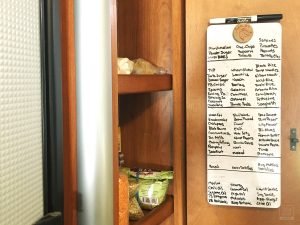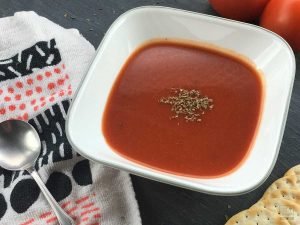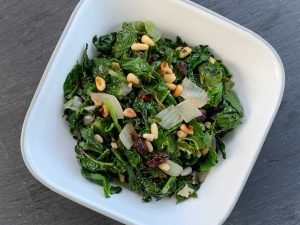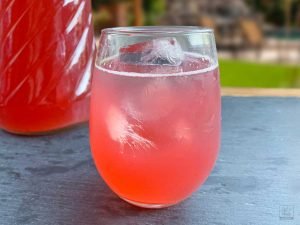 I’ve got a confession to make: I hate washing dishes. I hate washing dishes even more when they’re in my RV’s teeny tiny kitchen sink. You’ve been there… you want to cook something yummy but yesterday’s dishes are still there: stacked, greasy, smelly, and starting dry into what will soon become an arm workout that will make even a Crossfit trainer cry. Well, today I’m going to make this nasty chore a little easier. Here are my best tips on washing dishes in your RV or tiny kitchen. You’ll discover how to use less water and get the job done in half the time.
I’ve got a confession to make: I hate washing dishes. I hate washing dishes even more when they’re in my RV’s teeny tiny kitchen sink. You’ve been there… you want to cook something yummy but yesterday’s dishes are still there: stacked, greasy, smelly, and starting dry into what will soon become an arm workout that will make even a Crossfit trainer cry. Well, today I’m going to make this nasty chore a little easier. Here are my best tips on washing dishes in your RV or tiny kitchen. You’ll discover how to use less water and get the job done in half the time.
Why is handwashing dishes in an RV such a pain?
 The biggest challenge is space. In most RV and tiny kitchens, the sink itself is not much bigger than some of our pots and pans. When you add all the other prep items, utensils, and the plates you eat on… there’s no room left to even put them in the sink let alone room to have the space to work while washing them.
The biggest challenge is space. In most RV and tiny kitchens, the sink itself is not much bigger than some of our pots and pans. When you add all the other prep items, utensils, and the plates you eat on… there’s no room left to even put them in the sink let alone room to have the space to work while washing them.
What’s worse is when you get all geared up to finally cook some dinner and what do you discover? Every single dish you own (because you don’t own more dishes than you need) is filthy.
As a matter of fact, I think that washing dishes in a small sink is such a pain in the butt that I’ve even dedicated a section in every recipe on this site to how many and what kind of dishes you are going to use during preparation. I like to know these things in advance and I figured you would appreciate that knowledge too.
General tips for washing dishes in a tiny kitchen…
- Wipe off food and grease before you put dishes in the sink.
Scrape your dishes into the trash and wipe them down with a paper towel or napkin before you stack them in the sink. This prevents that nasty dried food crust from forming. It will also cut down on rogue smells and will reduce the amount of work you do when you actually wash them. To avoid making additional garbage, we usually just use the same paper towels or napkins we used during our meal. Sometimes I’ll even grab a stray piece of food-packing material like cellophane from the trash and use that instead. - Stack and wash in pyramid fashion.
Use the largest container you have to capture water while you rinse. Fill it with dirty dishes, stacking each inside the other. For any items that don’t fit, wash and rinse those items over top of your basin / stack. This will start a small collection of soapy water for your other dishes to soak in while you work. Use this soapy water to help loosen and scrub the gunk off each of the items in the stack. Return to them to the formation. Now rinse your dishes. Let the water come down over the others. By the time the big stuff has been rinsed you’ll have already run enough water over the small stuff that only a light rinse with fresh water will be needed. - Wash dishes in order.
There was a commercial for dish soap back in the 1980s that has been stuck in my head for so many years. This little girl was telling her dad about “how mom washed the dishes.” Eye-rolling sexism aside, the order went as such: glasses, silverware, dishes, then pans. It made sense. Start with items that are fragile and the least likely to be dirty or greasy. Gradually work your way into the harder to clean items. Start by washing drinking glasses and utensils. Then wash plates, bowls, and any other serving dishes. Finally, finish up with your pots and pans. - Learn to sanitize.
Simple hot water is the solution to most of your disinfecting needs, but sometimes you need something a little stronger. For a strong disinfectant, you can create your own sanitizing solution by combining a mix of 20/80 bleach and water. I always use this type of disinfectant whenever I’m cleaning up after working with any type of meat, especially raw poultry. If you only need a mild disinfectant, make a mixture of 50/50 white vinegar and water. This vinegar solution is a great surface cleaner and can also help get rid of soap scum. Don’t worry, when your dishes dry, they won’t smell like vinegar. - Lower your standards.
I’m serious. I wish I was kidding, but sometimes you don’t need to scrub and sanitize certain dishes. Sometimes a simple rinse and wipedown is all that is required. As long as the dish in question didn’t come in contact with any meat (beef, fish, poultry, etc.), animal by-products (milk, butter, eggs, cheese, etc.), or any heavy starches (like those that come from noodles or potatoes)… why waste the soap? Just give the dish a quick rinse and dry it off.
Boondocking & Washing Dishes
a.k.a. How to make all your chores even harder and more time-consuming but way better because you have a much cooler view!
When you go boondocking, one of the main goals is to conserve all of your resources. The most important resource being fresh water. So now you’re not not only juggling a ton of dishes in a tiny sink, you’re also trying to use as little water as possible to get those dishes clean. Add the another minor concern over propane and you’ll find yourself trying to wash a sink full of dishes with as little cold water as possible. Fun.
Still think those insta-famous RVers you see on YouTube are living such a glamorous life? They are. They really are. But only because the majority of them are using some, if not all, of these clever ideas to minimize water, reduce waste, and reclaim every inch of space and drop of their precious resources.
How to save resources (water, gray tank space, and propane)
- Actively adjust your water use.
The majority of wasted water happens between the dishes the you are washing. If you actively turn the faucet on and off, you’re not letting water flow when you’re using it. When you do turn the water on, set it to a small stream instead of having it run full blast. Washing dishes in a small stream of water is easier than it seems. You will end up using your hands a lot more to rub the water over your dishes, but you will also be surprised to learn how much water you can save when you do this. - Save rinse water for later.
After the most of the dishes have been rinsed off, I’m usually left with my largest pot or bowl holding a good deal of water. We save this water in a pitcher and reuse it for flushing our toilet. The major benefit here is that you won’t have to tap into your fresh water reserves. You also get the benefit of adding grease-cutting dish soap to your black tank. Poop is surprisingly greasy and this will help break up some of that. Additionally, because you’re reusing the water you were going to dump anyway, you can good about using more of it. More water in your black tank will help keep bathroom smells to a minimum. - Heat your water wisely.
When possible, use the sun to heat your water and wash your dishes in the afternoon when your fresh water tank is warmest. If you already boiled water to cook noodles, strain it over a greasy pot or pan. Why heat twice batches of water when you don’t have to? Finally, you can save additional propane by heating water in a small pot on your stove instead of using your hot water heater. This method will also prevent you from having to run a lot of water through your pipes before the hot water gets to your kitchen faucet.
What not to do when washing dishes…
- Don’t use too much soap!
You might think that using more soap or getting more suds is helping you get your dishes cleaner. This isn’t true. You’re really just making them harder to rinse off and will end up using more water to do so. Too much soap leaves behind a slimy residue. If you don’t get all the residue off, you will see it in the form of a cloudy film all over your dishes or, even worse, taste it. More often than not, a little bit of natural, biodegradable soap like Mrs. Meyer’s Clean Day Dish Soap and some hot water is all you need to clean and sanitize your dishes. - Forget about using paper plates!
It’s one of the most common solutions you’ll hear: “Oh, I use just paper plates… nothing to clean up!” Paper plates on rare occasions? Sure. But let’s be realistic: it’s wasteful, bad for the environment, generates a lot of trash, and it’s not very budget friendly. Storing paper plates and plastic cups will always take up more room than storing the reusable kind. Plus, if you’re living in your RV full-time, needing to go out to buy paper plates all the time is just annoying. - Don’t throw your rinse water outside!
Dumping gray water (rinse water) is frowned on in most campgrounds, county parks, state parks, national parks, and even on some BLM lands. If you’re on private land, you might be able to do it without anyone complaining. Social acceptance and environmental awareness is not the only reason why you shouldn’t dump though. Do you like bear? Because that’s how you get bear. When you dump rinse water you run the risk of attracting some not-so-cute-and-fluffy wildlife with the deliciously smelly food bits that could be floating in it.
All clean, now I’m done… right?!

Neat huh? For tiny homes that rarely move or a studio apartment, these racks are awesome.
When you’re living in an RV and you’re mobile, different rules apply.
Everything that sits out in the open and looks oh-so-cute-and-homey, actually ends up being a lot of work. You see, when you drive your RV away, things have a tendency to bounce, bang, and fall on the floor. This means that adorable rack will need to get emptied every time you move. To make matters worse, most RVs are not build very well. Drilling into the walls can be problematic since most walls are only an inch or so thick. So one of these Finnish dish-drying racks will not work in this type of environment.
About everyday dish-drying solutions
What about a normal drying rack or one of those super-absorbent drying mats? They are tried and true. You know that they’ll work in any type of kitchen. Aesthetically they’re not even all that bad to look at. In an RV, however, you might want to rethink this idea too.

In case you didn’t already know, RVs have a tendency to collect moisture. Allowing dishes to dry on their own is generally not a great idea unless you like the condensation, mold, and mildew that comes from excess moisture. Unless you’re parked in the desert, are guaranteed the chance to open all of your windows, or have a really good dehumidifier… you’re not going to see many experienced RVers leaving all those dishes out to air-dry.
I challenge you to share your photos in the comments if you think I’m wrong.
Are you suggesting I dry dishes… by hand?!
Dry your dishes by hand with a clean towel and you will avoid getting a lot of moisture in you RV.

Does it suck to get through an entire round of washing dishing, follow up with an entire round of drying dishes, and then still have to put them all away? Hell yes. But by the time you’re done you’re kitchen will look immaculate and your future self will thank you for your effort. There’s nothing better than cooking in a clean kitchen.
Boom! Clean dishes! (mic drop)
There you have it! All the ins and outs of how to go about washing dishes in an RV or a tiny kitchen. It’s an annoyance in any size kitchen. But hopefully these tips will help you boondock longer, conserve water, extend your waste tanks, and make a dirty chore a little easier.
Have any other helpful ideas about washing dishes?
Please share them in the comments below!







